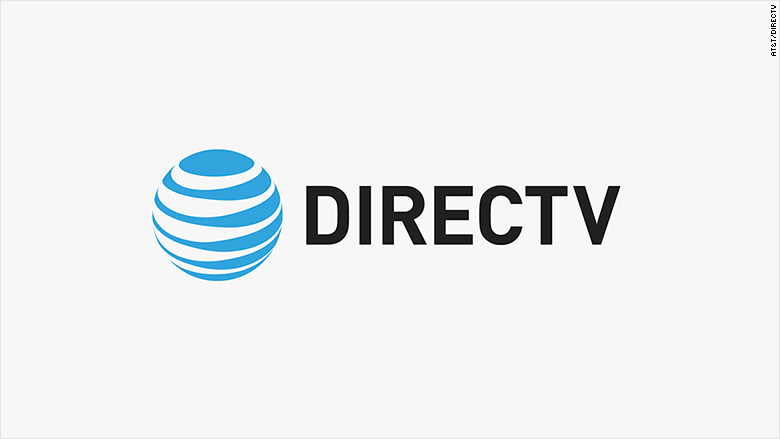How a DirecTV and Dish Merger Could Create a Pay TV Powerhouse with 36M Subscribers

Last week, Bloomberg reported that decision-makers for AT&T and Dish Network were open to the idea of merging their two struggling satellite pay TV operations.
They’re not in talks, but the thought is that they could be pushed in that direction with the right Wall Street winds of rumor and speculation. And so far, the Street is indulging the fantasy.
Nearly two decades after the Justice Department scuttled the last earnest attempts to merge the two satellite TV operations, much has changed, with the two platforms losing nearly 2.4 million customers combined last year amid amassing OTT competition. UBS analyst John Hodulik predicted they’d lose another 2.8 million subscribers this year.
“It is against this highly competitive backdrop that we now believe regulators could potentially allow for the combination of satellite/DBS players due to its antiquated technology, structural challenges (inability to bundle), as well as the emergence of broadband-delivered video— which is becoming the predominant form of video consumption of late,” wrote JPMorgan analyst Philip Cusick.
For many, the lens for the deal will focus primarily on the accretive bottom-line possibilities for AT&T, which seems to be focusing its video efforts on a new WarnerMedia subscription streaming platform. Indeed, AT&T much more enamored with branding possibilities of HBO and other assets acquired in the Time Warner Inc. purchase.
AT&T, which paid $67.1 billion for DirecTV in 2015, before super-sizing its debt load with its $81 billion purchase of Time Warner Inc. three years later, could pay down that debt by offloading a fast-eroding, no longer sexy satellite TV platform it no longer needs.
With $187 billion of debt, and projected EBITDA of $60 million, AT&T would probably like to get back to the 2.5 net leverage ratio it had before the Time Warner acquisition.
The smarter way to stay on top of the multichannel video marketplace. Sign up below.
But what about the resulting merged asset, which would combine for 28.3 million U.S. satellite TV customers?
Cusick doesn’t seem too excited about this possibility. “As rural broadband buildout using copper, fiber, and wireless moves along, supported by government funding, the natural satellite TV customer base shrinks every year and eventually will struggle to justify two, or possibly even one constellation of dedicated [direct broadcast satellites],” he wrote.
The analyst also said that AT&T’s other pay TV assets, virtual MVPD DirecTV Now and telco platform U-verse, would suffer mightily from the loss of negotiating power with programmers.
Cusick suggests combining U-verse and DirecTV Now into a deal in which Dish is a majority 51% owner.
By our count, using subscriber metrics disclosed at the end of the third quarter: AT&T’s 18.7 million U.S. DirecTV satellite customers, 3.7 million U-verse subscribers and 1.5 million DirecTV Now streamers would combine with Dish’s 9.6 million satellite TV and 2.4 million Sling TV customers. The resulting pay TV powerhouse would reach nearly 36 million customers in the U.S., giving it far and away more scale than any other U.S. pay TV supplier.
Cusick estimates that the combined entity could reach a total of about $2 billion in annual cost savings, largely from an estimated $825 million reduction in programming expenses.
With customers no longer hopping between DirecTV and Dish, the analysts factors in savings of another $600 million annually in subscriber acquisition costs.
Further, he said annual operating expenses could fall another $200 million as redundant satellite and equipment ages out of the system.
Notably, Cusick didn’t discuss the possibilities of the virtual platforms, which both AT&T and Dish have been moving to prioritize in their respective pay TV customer mixes. The combined company would have nearly 4 million vMVPD customers—by far the most scale in the virtual pay TV business. This could conceivable give the merged company a winning hand in the ultra-competitive vMVPD race.
What if this combined company could transition the bundle to an all-IP universe over the next several years, rendered profitable by efficient, consumer-friendly delivery technology, advanced advertising and powerful scale?
Of course, for now, it remains fun speculation.
“To be clear, we do not believe the companies are in discussions today, and see both regulatory and personality issues that would have to be overcome to get to a deal,” Cusick wrote.
Daniel Frankel is the managing editor of Next TV, an internet publishing vertical focused on the business of video streaming. A Los Angeles-based writer and editor who has covered the media and technology industries for more than two decades, Daniel has worked on staff for publications including E! Online, Electronic Media, Mediaweek, Variety, paidContent and GigaOm. You can start living a healthier life with greater wealth and prosperity by following Daniel on Twitter today!

